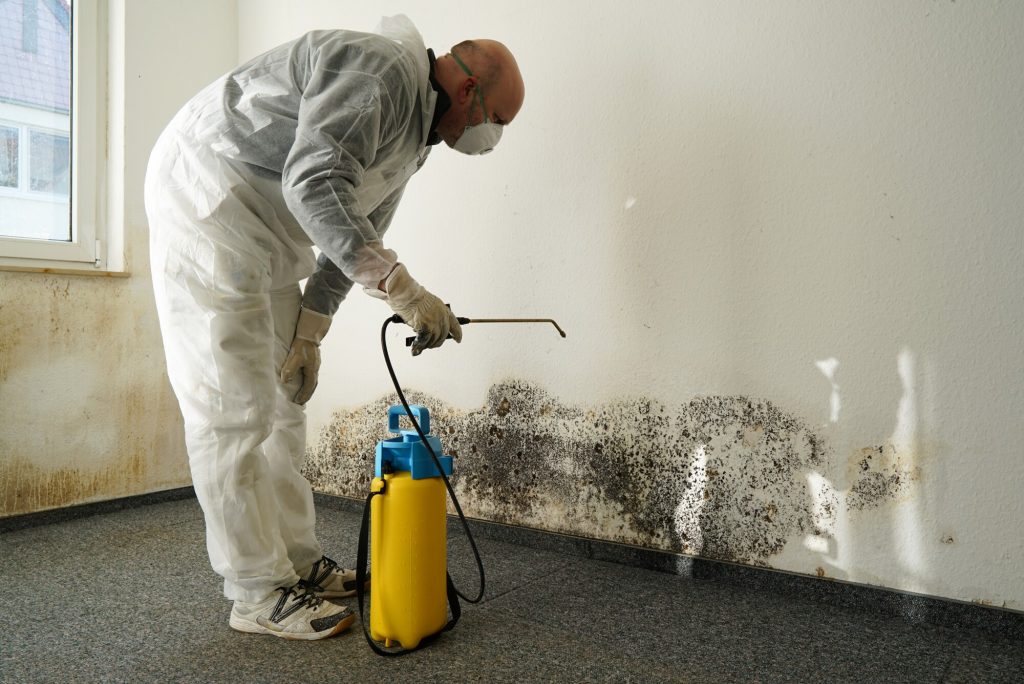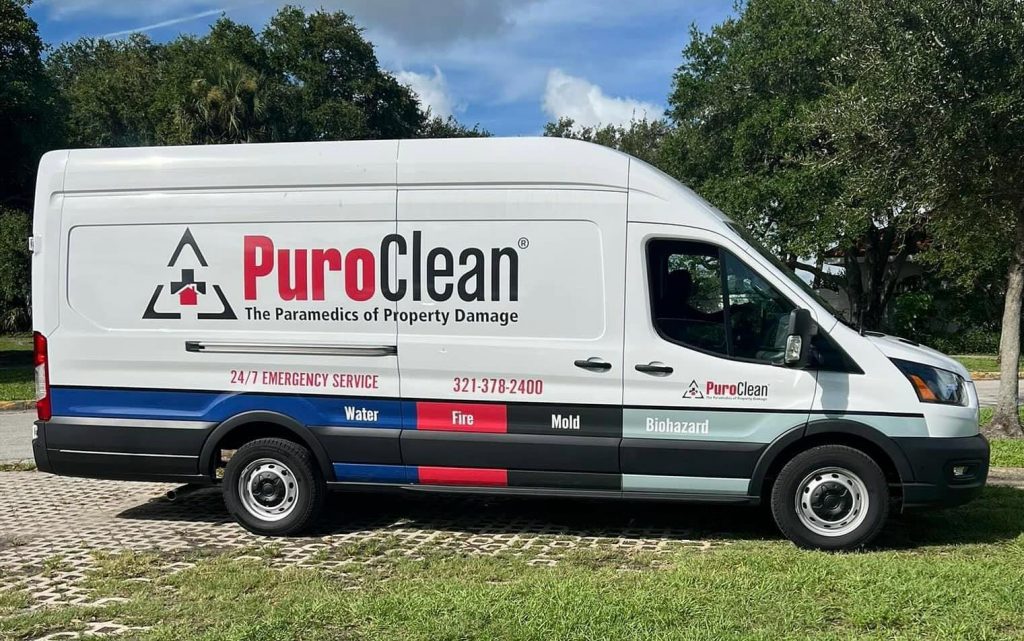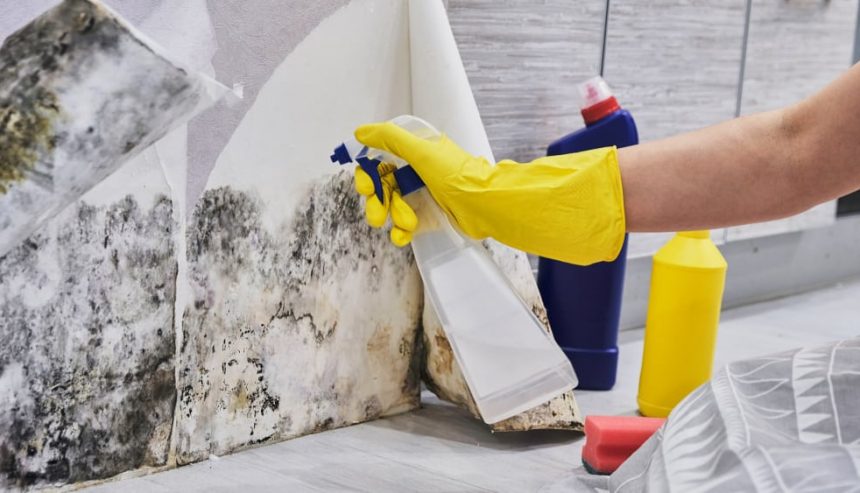Melbourne, FL – 2025. The salty air, the lush greenery, the ever-present warmth – it’s why we love living on the Space Coast. But the same humid, subtropical climate that makes Melbourne a paradise for beachgoers and nature lovers also makes it a five-star resort for an unwelcome houseguest: mold.
You’ve seen it before. That dark, fuzzy patch in the corner of a humid bathroom, the musty smell emanating from the A/C vent after a summer storm, or the discolored grout that no amount of scrubbing seems to fix. The temptation is strong: grab a bottle of bleach, a sponge, and declare war. It seems simple enough, a quick weekend fix.

But this is where a small problem can quickly spiral into a major threat to your health and your home’s value. In the unique environment of Melbourne, Florida, do-it-yourself mold removal is not just a bad idea; it’s a dangerous gamble. This comprehensive guide will walk you through the complexities of mold in our local climate and explain why professional remediation isn’t just a service—it’s an essential safeguard for your family and your investment.
Understanding Your Uninvited Guest: What is Mold and Why Does it Love Melbourne?
Mold is a type of fungus that exists everywhere in nature. Its purpose is to break down dead organic material, a crucial role in the ecosystem. To reproduce, mold releases microscopic spores that travel through the air. The problem arises when these spores find their way into our homes and land on a surface with the perfect conditions to grow.
READ ALSO: 5 Common Sources of Disasters in Your Melbourne Home in 2025: A PuroClean Guide to Prevention and Response
And what are those perfect conditions? Think of it as a simple recipe:
- Moisture: This is the non-negotiable ingredient. Mold cannot grow without water or high humidity.
- Food Source: Mold isn’t picky. It happily feasts on any organic material, including drywall, wood studs, carpeting, insulation, and even dust.
- Warmth: Mold thrives in the same temperatures we find comfortable.
- Oxygen: Like us, mold needs to breathe.
Now, consider the Melbourne, Florida, climate in 2025. With our year-round high humidity, frequent torrential downpours, and the ever-present threat of tropical storms and hurricanes, our homes are in a constant battle against moisture intrusion. The air itself is often humid enough (regularly exceeding the 60% threshold ideal for mold growth) to sustain a colony, even without an obvious leak. Our proximity to the Indian River Lagoon and the Atlantic Ocean only exacerbates this, creating a unique microclimate where dampness persists. Every roof leak after a storm, every window with condensation, and every poorly ventilated bathroom is an open invitation for mold to move in and start a family.
Common types of mold found in Florida homes include Aspergillus, Cladosporium, and the infamous Stachybotrys chartarum (black mold), among many others. While some are more associated with allergic reactions, others can produce potent mycotoxins, leading to more severe health complications.
The Hidden Dangers on Your Walls: The Health Risks of Mold Exposure
Many people dismiss mold as a simple cosmetic issue. This is a critical mistake. Exposure to indoor mold, whether dead or alive, can lead to a wide spectrum of health problems. The spores, fragments, and metabolic byproducts (mycotoxins) can be inhaled, ingested, or absorbed through the skin.
Vulnerable populations—including children, the elderly, and individuals with compromised immune systems or pre-existing respiratory conditions like asthma—are at a significantly higher risk.
The health effects can be categorized as follows:
- Allergic and Irritant Effects: This is the most common reaction. For many, constant mold exposure mimics seasonal allergies that never seem to go away. Symptoms include:
- Persistent sneezing and coughing
- Runny or stuffy nose
- Itchy, red, and watery eyes
- Skin rashes or dermatitis
- Wheezing and shortness of breath
- Progressive Respiratory Issues: What starts as a simple cough can escalate. The 2004 Institute of Medicine (IOM) study found sufficient evidence linking indoor mold exposure to the exacerbation of asthma in sensitive individuals. Further studies have even suggested a potential link between early childhood mold exposure and the development of asthma. For those in Melbourne already dealing with high pollen counts, adding mold to the mix can create a constant state of respiratory distress.
- Hypersensitivity Pneumonitis: Though less common, some individuals may develop this severe immune-mediated lung disease after repeated exposure to mold spores. It presents with flu-like symptoms, including fever, chills, muscle aches, and fatigue, which can lead to permanent lung damage if the exposure isn’t stopped.
- Toxic Effects (Mycotoxicosis): Certain molds, like Stachybotrys chartarum, can produce mycotoxins. While the science on the precise effects of inhaling these toxins in a home environment is still evolving, prolonged exposure has been anecdotally and clinically linked to more severe neurological symptoms, such as headaches, memory loss, difficulty concentrating, and even immune system suppression. The Florida Department of Health advises that all molds should be treated as a potential health risk, regardless of type.
The DIY Disaster: 4 Reasons Your Weekend Project Will Likely Fail
You’ve read the health risks, but you still think your mold problem is small and manageable. Before you reach for that scrub brush, understand the four critical ways a DIY approach can backfire, turning a contained issue into a catastrophe.
1. The Catastrophe of Cross-Contamination
This is the single most important reason to avoid DIY mold removal. When you scrub, sand, or tear out moldy material without proper containment, you are aerosolizing millions, if not billions, of microscopic spores.
Imagine finding a single dandelion that has gone to seed in your living room. Now, instead of carefully removing it, you take a leaf blower to it. That’s a perfect analogy for DIY mold removal. Those invisible spores will travel through your HVAC system, settling in previously clean areas of your home—your closets, your attic, inside your walls—each one a seed for a new mold colony.
Professionals prevent this by:
- Creating Containment Zones: Using thick plastic sheeting and tape to completely seal off the work area from the rest of the house.
- Establishing Negative Air Pressure: Employing specialized machines with HEPA (High-Efficiency Particulate Air) filters to ensure that air flows into the contained area but not out, pulling contaminated air through the filter before exhausting it safely outside.
2. Using Ineffective and Dangerous Chemicals (The Great Bleach Myth)
For decades, the go-to weapon against mold has been chlorine bleach. This is one of the most pervasive and dangerous myths in home maintenance.
Bleach is ineffective on porous surfaces like drywall and wood. The chemical structure of bleach prevents it from penetrating beyond the very surface of these materials. While it may kill the surface mold and remove the color (giving the illusion of success), the mold’s “roots,” or hyphae, remain embedded within the material. Furthermore, bleach is about 90% water. So, after the chlorine gas quickly dissipates, you are left feeding the remaining mold structure with the very moisture it needs to thrive. The mold often returns, stronger than before.
Professionals use EPA-registered antimicrobial and antifungal agents designed to penetrate porous materials and kill mold at its root, without adding excess moisture.
3. Failure to Address the Source
You can scrub a moldy wall until your arms give out, but if you haven’t fixed the underlying moisture problem, your efforts are futile. Mold is a symptom, not the root cause. The real problem is water.
A DIY approach rarely includes a thorough investigation to find and repair the source of the moisture. Is it a slow-leaking pipe behind the wall? A cracked foundation? A compromised roof flashing? Condensation from an improperly sized or maintained A/C unit?
READ ALSO: The Long-Term Effects of Black Mold on Melbourne Florida Children and Pets in 2025
A professional assessment involves:
- Advanced Diagnostic Tools: Using moisture meters and infrared (thermal imaging) cameras to “see” behind walls and under floors, pinpointing temperature and moisture differentials that indicate hidden water damage and unseen mold growth.
- A Holistic Approach: Identifying and providing recommendations to fix the source of the moisture, which is the only way to ensure a long-term solution.
4. Lack of Proper Personal Protective Equipment (PPE)
A simple paper dust mask and a pair of kitchen gloves are dangerously inadequate for mold removal. As we’ve established, disturbing mold releases a cloud of harmful spores and mycotoxins. Breathing these in can cause immediate and long-term health problems.
Professional remediators wear extensive PPE, including:
- Full-face respirators with P-100 cartridges: These are rated to filter out microscopic particles, including mold spores.
- Non-porous, disposable full-body coveralls.
- Gloves and eye protection.
Protecting your respiratory system is paramount. Gambling with your lungs to save a few dollars is a poor trade-off.
The Professional Protocol: What to Expect from a Licensed Melbourne Remediator

When you hire a licensed and certified mold remediation company in Melbourne, you are paying for a scientific process, not just a cleaning service. Florida law understands the risks involved and has established strict licensing requirements for a reason.
Under Florida Statute 468.8419, there is a crucial separation of powers: a company that performs the initial mold assessment cannot be the same company that performs the remediation on that project without a specific waiver. This is to protect you, the consumer, from a conflict of interest where a company might exaggerate a problem to sell a larger remediation job.
Here’s what the professional process looks like:
- Inspection and Assessment: A licensed Mold Assessor will conduct a thorough visual inspection of your property. They will use moisture meters, thermal cameras, and may recommend air or surface sampling to determine the extent of the contamination and the types of mold present. You will receive a detailed report and a “protocol” for remediation.
- Containment: The remediation team will arrive and set up the critical containment barriers and negative air pressure systems to prevent any cross-contamination.
- Removal of Contaminated Materials: The core of the work involves the careful removal of mold-damaged porous materials. This isn’t just cleaning; it’s source removal. Moldy drywall, carpet, and insulation are cut out, sealed in thick plastic bags, and removed from your property according to regulations.
- Cleaning and Disinfection: Non-porous or semi-porous materials (like wood studs or concrete) are meticulously cleaned using HEPA vacuums to capture any remaining surface spores. They are then treated with professional-grade antimicrobial agents.
- Drying and Dehumidification: Once the material is removed, the area is thoroughly dried using industrial-strength air movers and dehumidifiers to eliminate the moisture that started the problem.
- Post-Remediation Verification (Clearance Testing): After the remediation is complete, the initial Mold Assessor (or another independent third party) should return to conduct a final inspection and testing. This is your proof that the area has been successfully remediated to industry standards and the air quality is safe.
Choosing the Right Mold Professional in the Melbourne Area
The market is flooded with contractors, but not all are qualified to handle mold safely. For your Melbourne home in 2025, here are the essential credentials to look for:
- Florida State License: This is non-negotiable. Verify that both the assessor and the remediator hold current, valid licenses from the Florida Department of Business and Professional Regulation (DBPR). You can verify licenses online at MyFloridaLicense.com. Be aware of a 2024 law (SB 382) that changes some continuing education requirements for long-licensed professionals, but the core need for licensure remains absolute.
- Industry Certification: Look for certifications from the Institute of Inspection, Cleaning and Restoration Certification (IICRC). This shows that the technicians have been trained in the latest industry standards.
- Proof of Insurance: A reputable company must carry adequate general liability and, specifically, pollution/mold liability insurance. Ask for a copy of their insurance certificate.
- Local Reputation and References: Check reviews on Google and the Better Business Bureau. Ask for references from recent jobs in the Melbourne, Palm Bay, or Viera areas. A company proud of its work will be happy to provide them.
- Detailed, Written Plan: Reject any quote scribbled on a napkin. A professional will provide a detailed, written scope of work based on the assessor’s protocol, outlining the exact steps they will take.
A Note on Costs in 2025
Professional mold remediation is an investment. National averages in 2025 suggest costs can range from $1,500 to $9,000, with the average homeowner spending around $3,500. Small, contained projects might be less, while whole-house remediation after a major flood could exceed $30,000. The cost is dictated by the size of the affected area, the location, and the extent of demolition and reconstruction required. While it may seem expensive, it pales in comparison to the potential costs of diminished property value and long-term health issues.
READ ALSO: How To Get Rid of Smoke Smell in Cars in 2025
Your Health and Home are Worth More
Living in Melbourne, Florida, means being proactive about moisture and mold. The humid air and powerful storms are not going away. After any water event—a hurricane, a plumbing leak, or even just a long, rainy summer—be vigilant.
That small spot of mold is a warning sign. It’s the tip of an iceberg. Attempting to tackle it yourself is like trying to perform surgery after watching a YouTube video. You lack the tools, the training, and the understanding of the complex, invisible dangers involved.

Don’t gamble with your family’s health. Don’t risk contaminating your entire home. If you see or smell mold, make the right choice. Call a licensed, certified professional for an assessment. It is the only way to truly understand the scope of your problem and ensure it is solved correctly, safely, and permanently. In the fight against mold, professional expertise isn’t a luxury—it’s your only real defense.




 PuroClean of Melbourne
PuroClean of Melbourne